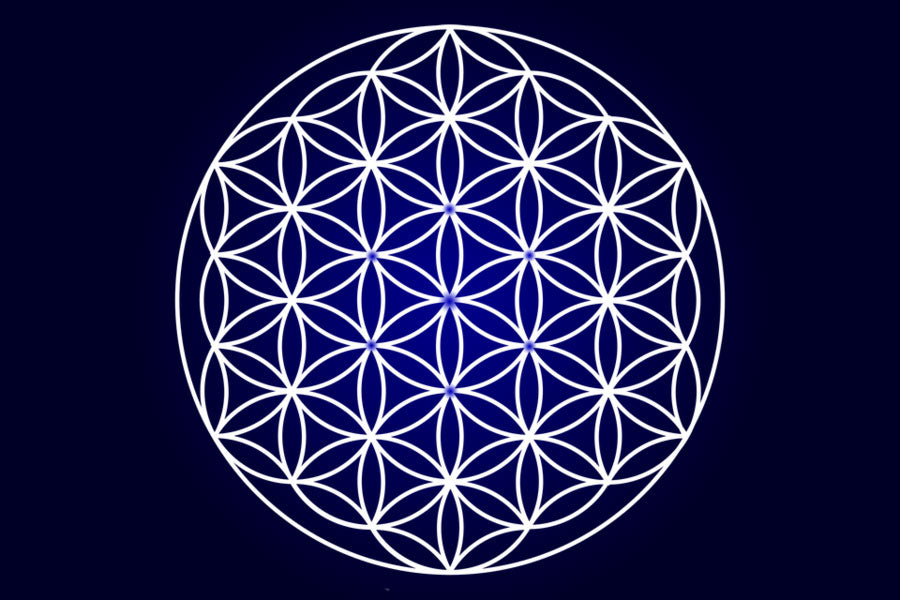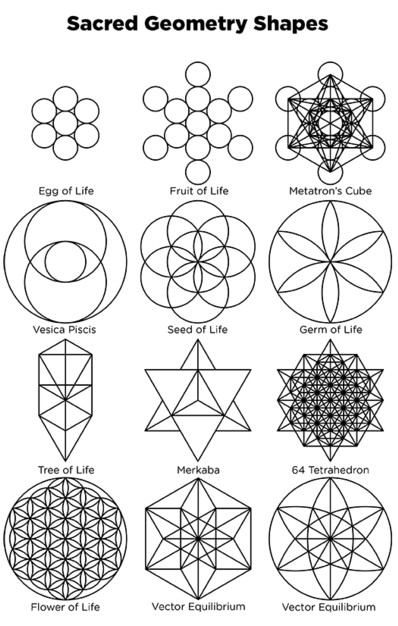Sacred Geometry Flower of Life: The Geometry of the Universe Explained
Sacred Geometry Flower of Life: The Geometry of the Universe Explained
Blog Article
The Intricate Elegance of Flower of Life Art: A Guide to Spiritual Geometry in Modern Design
The Flower of Life art, steeped in historic significance and abundant symbolism, serves as an engaging example of exactly how spiritual geometry can enhance contemporary style. This elaborate pattern, made up of overlapping circles, not only mesmerizes the eye yet also welcomes contemplation of unity and interconnectedness in our lives.
Historical Relevance of Blossom of Life
The Flower of Life is not simply a geometric pattern; it holds extensive historical importance throughout various cultures and people. This intricate design, made up of numerous overlapping circles, has actually been discovered in ancient holy places, manuscripts, and artefacts, showing its prevalent recognition and reverence throughout history. Significantly, the Blossom of Life has actually shown up in the art and style of ancient Egypt, where it was typically connected with the sacredness of production and deep space.
In addition to its presence in Egyptian culture, the Flower of Life can be traced back to ancient Greece, where theorists like Plato and Pythagoras used geometric types to explain the universes, connecting maths to spirituality. This sign has also been found in the Far East, particularly in Buddhist and Hindu art, where it stands for the interconnectedness of life and the cycle of existence.
The withstanding nature of the Blossom of Life shows its function as an universal sign of harmony and unity. As societies have evolved, this design has transcended its historic origins, proceeding to motivate modern art and spiritual methods, consequently protecting its importance across time and cultures.
Symbolism Behind the Layout

The Blossom of Life is usually linked with spiritual geometry, recommending that deep space is structured according to details geometric concepts. This idea indicates that the patterns discovered in nature, such as the branching of trees or the formation of crystals, show a divine order. The design is assumed to stand for the cycle of death, life, and rebirth, emphasizing the continuous nature of existence.
In various spiritual practices, the Flower of Life is viewed as a source of divine power and enlightenment, acting as a tool for reflection and consideration. By incorporating this icon into art and decor, people seek to conjure up a sense of consistency and balance in their settings, linking with the much deeper significances installed in the style. Hence, the Flower of Life goes beyond simple aesthetic appeals, personifying profound spiritual significance.
Modern Applications in Decoration
In modern interior layout, the Flower of Life concept has arised as a popular ornamental component, perfectly mixing visual appeals with much deeper spiritual meanings. This complex pattern, made up of overlapping circles, symbolizes unity, interconnectedness, and the intermittent nature of life, making it a perfect option for modern-day spaces looking for consistency.
Interior designers include the Blossom of Life into different applications, consisting of wall art, textiles, and furnishings layout. Wall murals or printed canvases featuring this geometric pattern can offer as striking focal factors, while throw carpets and cushions embellished with the theme include a refined yet innovative touch to living areas. Furthermore, furnishings items, such anchor as coffee tables with ornamental displays or etched layouts, boost spatial aesthetics while promoting a sense of equilibrium.
The Flower of Life is additionally discovering its means into illumination fixtures, where its shapes can produce thrilling shadows that evoke a sense of tranquility. Beyond mere decoration, these applications invite consideration and influence a connection to the world, raising the general atmosphere of any type of area. As the recognition for spiritual geometry expands, the Flower of Life continues to resonate within modern design, symbolizing both charm and deeper significance.

Creating Peacefulness With Spiritual Geometry
How can spiritual geometry cultivate a sense of serenity in our living rooms? The principles of sacred geometry, rooted in ancient practices, reverberate with natural patterns and harmonious percentages found in the world. By including forms and designs such as the Blossom of Life, people can grow a serene atmosphere that advertises equilibrium and tranquility.
The Blossom of Life icon, characterized by interconnected content circles, personifies unity and the interconnectedness of all living things - Sacred Geometry Flower of Life. This complex layout not just astounds the eye but also encourages mindfulness and reflection. When tactically put in a home, such representations can act as focal factors that attract focus far from turmoil, welcoming a minute of tranquility

Incorporating spiritual geometry into décor can boost the website link emotional atmosphere of an area. The symmetrical and well balanced nature of these styles can stimulate feelings of security and comfort. In addition, the repeated patterns located in sacred geometry can develop a reflective aesthetic experience, helping to lower tension and anxiousness.
Eventually, welcoming sacred geometry in our space allows us to produce a sanctuary of harmony, fostering a deeper link with ourselves and the world around us.
Tips for Incorporating Flower of Life
The Blossom of Life symbol can be effortlessly incorporated into different facets of home design to improve both visual appeal and emotional health. One effective method to include this spiritual geometry is through wall art. Go with large canvas prints or framed pieces including the Blossom of Life design, which can function as focal factors in living areas or meditation spaces.
Textiles deal an additional tool for integration. Think about paddings, tosses, or curtains adorned with the Flower of Life pattern to instill your area with consistency and equilibrium. Additionally, ceramic or wooden decoration products-- such as bowls or rollercoasters-- can include engraved or repainted designs, creating subtle yet impactful accents throughout your home.
For a more immersive experience, integrate the Flower of Life into your garden or outside areas. Yard sculptures or rocks can show this geometry, welcoming harmony right into your exterior setting. Last but not least, consider using the symbol in lighting components; necklace lights or light fixtures can develop thrilling darkness that boost the setting.
Final Thought

The Flower of Life art, steeped in historical significance and rich symbolism, offers as an engaging instance of just how spiritual geometry can improve contemporary decoration.Interior designers incorporate the Flower of Life right into numerous applications, consisting of wall surface art, textiles, and furniture design (Sacred Geometry Flower of Life). By incorporating layouts and forms such as the Flower of Life, people can cultivate a peaceful environment that advertises equilibrium and peace
Opt for large canvas prints or mounted items featuring the Flower of Life layout, which can offer as focal points in living rooms or reflection areas.
The Flower of Life art exhibits the unified combination of sacred geometry within modern decoration.
Report this page